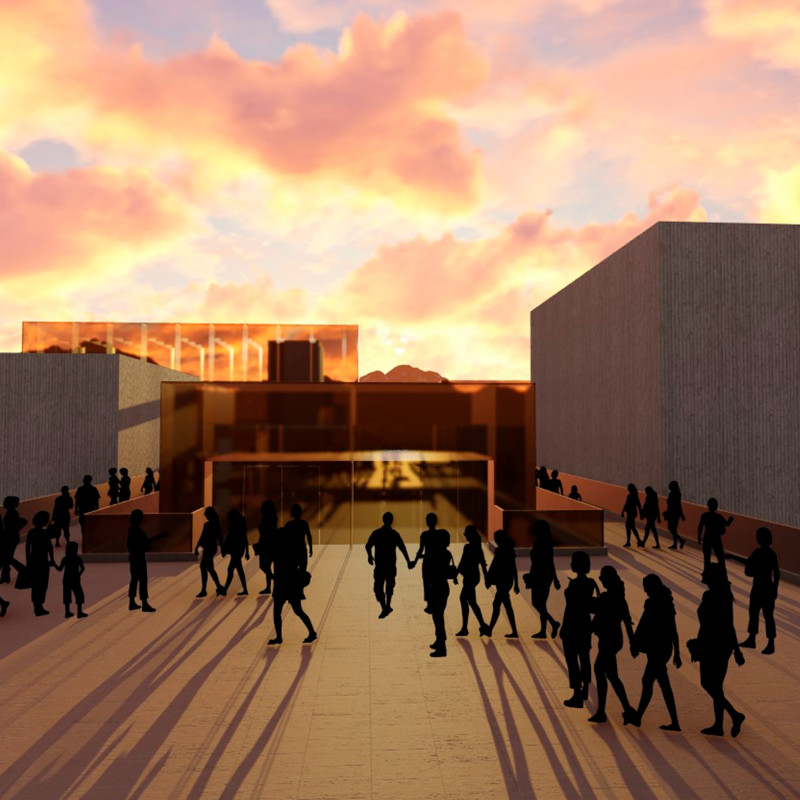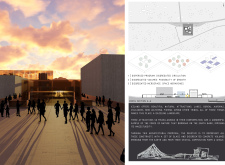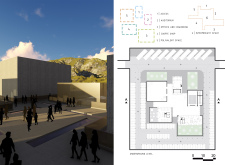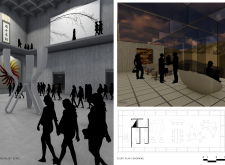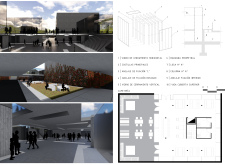5 key facts about this project
The design represents a commitment to usability and engagement, creating a place where individuals can come together for social interaction, work, and cultural activities. It embodies a series of distinct programmatic zones, all thoughtfully integrated into the site. Central to this is the auditorium, designed to host community events and cultural performances, which not only provides a gathering point for residents but also strengthens the local identity. Surrounding this core are offices and co-working spaces that promote collaboration and creativity, accommodating an evolving work environment that reflects the needs of modern users. Adjacent to these areas is a cafeteria that acts as a social nucleus, designed to encourage informal interactions over meals and drinks.
The architectural design itself emphasizes a fluid spatial experience, where movement between various functions feels seamless. The overarching theme of disaggregation is manifested through a series of interconnected yet distinct volumes, allowing for flexibility and adaptability in usage. The interconnected pathways invite exploration and facilitate easy access while establishing a clear flow throughout the project. This thoughtful organization fosters a sense of community as users transition between different spaces, enhancing the overall experience of the project.
Materiality plays a crucial role in articulating the architectural language of the project. A careful selection of materials has been made to respond to both aesthetic and functional demands. Glass is extensively used throughout the design, allowing natural light to permeate the interiors while providing visual connectivity with the backdrop of Iceland's stunning scenery. Concrete serves as the structural backbone, delivering durability and a raw texture that resonates with the surrounding natural elements. Steel is deployed for its strength and flexibility, ensuring the integrity of the structure. Warmth is brought into the spaces through the use of wood, which is incorporated into the interior finishes, offering a comfortable and inviting atmosphere. Additionally, the inclusion of vertical gardens enhances biodiversity while contributing to a visual connection with nature.
One of the unique design approaches of this project is its commitment to sustainability. The integration of green roofs and vertical gardens not only contributes to aesthetic value but also addresses environmental concerns. These features improve air quality, reduce energy consumption, and promote ecological balance within the urban setting. The project's adaptive nature allows for potential expansion or modification, making it a forward-looking design that can adjust to the changing needs of the community.
Overall, this architectural project in Iceland successfully balances functionality with aesthetic consideration, creating a versatile and welcoming environment for its users. Through its careful planning, choice of materials, and sustainable design practices, it stands as a significant contribution to the architectural discourse, engaging deeply with the notion of community. Those interested in a deeper exploration of the project are encouraged to review the architectural plans, sections, designs, and ideas presented, gaining further insights into the thoughtful considerations that shaped this remarkable project.


